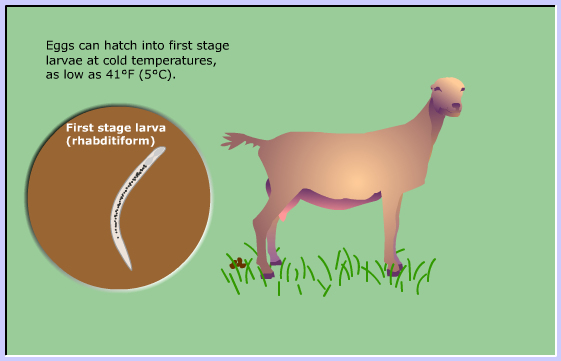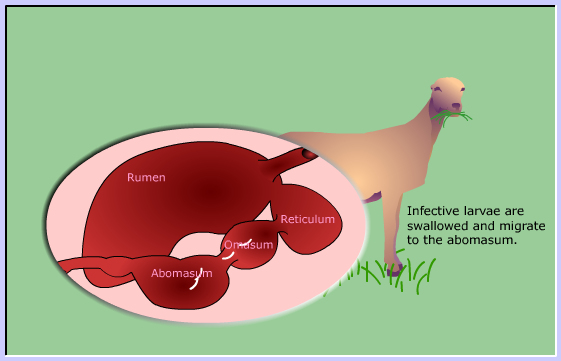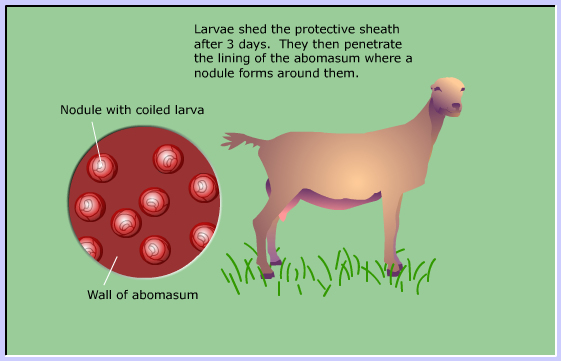The Biology of the Goat
Ostertagia circumcincta
Medium stomach or brown hair worm
The eggs are passed out with the feces.

Eggs can hatch into first stage larvae at cold temperatures, as low as 41°F (5°C)

Second stage larvae shed the cuticle.

Third stage infective larvae develop in about five to six days after the egg hatches
at optimum temperature of 70 to 80° F (22 - 27°C)

Infective third stage larvae crawl up blades of wet grass.

Infective larvae are swallowed and migrate to the abomasum.

Larvae shed the protective sheath after 3 days.
They then penetrate the lining of the abomasum where a nodule forms around them.

After a few more days the nodules darken and larvae begin to leave then continue
to develop to the adult stage.

Brown-colored adults can be found only nine days after infection
and mature females begin laying eggs about a week later.
Adult males about 8 mm, females 10 to 12 mm
Oocyte: 80-100 µm long by 40-50 µm wide, in 8 to 32 cell division stage.
Clinical Signs
Most problems are associated with the irritation to and haemorrhages of the wall
of the abomasum caused by the formation of nodules by the young worms.
The young animal shows loss of condition, occasional diarrhea and anemia.
In heavy infections, the young goat may weaken and die.
